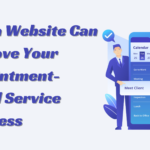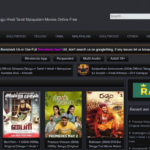Hubspot Personalization and Targeting
You may display customized material to your contacts using customization tokens in your CRM, taking into account their property values. Email marketing and your website’s interaction may both benefit from personalization. Content in your HubSpot emails, landing pages, and website pages may be customized using any custom or default contact attribute.
This article explains how to add personalize content to your page and email templates, as well as to rich text modules in the page editor and marketing email editor and target the relevant audience.
How does personalization work?
Tokens for personalization stand in for property values for CRM objects, such as corporations or contacts. The contact seeing the customization token has to be a tracked visitor with a contact record in your CRM and a known property value for that token in order for it to display a value.
Personalize your material by navigating through it:
- Website Pages: Go to Marketing > Website > Website Pages.
- Landing Pages: Go to Marketing > Landing Pages.
- Email: Go to Marketing > Email.
- Click alter after hovering your cursor over the name of the material you want to alter. To create a new piece of content, choose Create landing page, email, or website.
- To add a customization token, click a rich text module in the editor.
- Point the cursor where you want the personalization token to appear, then choose it using the rich text toolbar’s Personalize dropdown option.
- After selecting a token using the search box, click the Token dropdown option.
- To use a property as your token, choose it from the dropdown menu. Click the User property dropdown menu to choose a property from the owner’s user profile to use as your token if you choose Contact owner or Company owner.
- Decide on a default token value. If there is no value for that particular attribute in the contact, the default value will be applied. For the tokens, you may also establish global default values.
- To insert, click. In the rich text module, the name of the chosen property will be highlighted next to the token.
Which tokens are accessible and what qualities go with them depending on the kind of content you are making?
In practice, segmentation can result in well-informed business decisions about the best ways to target customers, including where to do so. Targeting is the process of utilizing segmentation to identify the target client base.
Targeting and customer segmentation go hand in hand. Targeting is the process of drawing in the audience, whereas segmentation aids in audience division.
However, don’t forget to use Hubspot direct mail for your audience.
Let’s return to the Spotify illustration. The streaming service chose to purchase advertising space in railway stations in order to specifically target its commuter clientele.
Which channel will you use to reach clients who fit certain categories? Consider coming up with strategies to draw in customers based on characteristics such as those if you’ve observed during segmentation that most of your clients are B2B startups with one to fifty employees.
Personalization tokens for every kind of material
Personalization tokens that employ a business or contact attribute are compatible with all content kinds.
Company: The values for the company properties linked to contacts in your HubSpot database are used by these tokens. This comprises tokens for the owner of the business, total income, sector, and name.
Contact: The values for any contact attributes linked to contacts in your HubSpot database are used by these tokens. The contact owner, first name, last name, and email tokens are included in this.
Segmenting and Targeting Customers
Today, 70% of a customer’s journey is determined by their perception of your treatment, therefore it’s critical to accommodate their interests. Gaining a thorough grasp of audience behavior is essential to capturing a customer’s attention mid-journey.
A good tactic to consider if you’re looking for fresh approaches to connect with your target market is customer segmentation. Because segmentation breaks your audience into smaller groups, it’s also a useful strategy if you have a big audience and want to know how to target a certain market.
As a marketer, are you B2B? The following are some well-liked traits for consumer segmentation that you may use to identify your clientele:
- Location
- Count of Employees
- Industry
- Purchaser actions
If SMBs are your target market, for example, you may further characterize them using these characteristics. Consider geographical and buyer behavior groups when launching a winter holiday campaign that includes a deal on your best-selling goods. This will help you choose who to target and how to promote to them.
Available for marketing emails are tokens of personalization
Depending on what kind of email you’re writing, a marketing email may have different personalization tokens accessible.
All marketing emails: If you’re making changes to an automated or standard marketing email, you may include a personalized token with information about your office’s location or the kind of subscription you use.
- Office location: the email footer data in your preferences is where these tokens originate from. Tokens for the city, state, and zip code are included in this.
- Subscription type: The email’s subscription type name is used by this token.
Automated marketing emails: You may include a customization token that corresponds to the kind of record that will be enrolled in your process to an automated marketing email if you have a Marketing Hub Professional or Enterprise account and Edit access to workflows.
- Deal: The values for the deal attributes connected to deals in your HubSpot database are used by these tokens. Tokens for the deal owner, amount, and closed win date are included in this.
- Ticket: You may utilize ticket properties linked to tickets in your HubSpot database if you have a Service Hub Starter, Professional, or Enterprise account.
- Custom object: You may utilize the attributes from any custom objects you’ve made if you have an Enterprise account.
When using the Receive email as specified contact dropdown menu, only contact and corporate customization tokens may be checked when sending a test email.
Preview personalization
Press the Preview button located in the top right corner of your page to get an example of how personalization will look on your landing pages and website pages. Click the Choose a Contact to preview the dropdown menu and choose a contact to see the page as that contact.
- Select Preview from the Actions dropdown menu in the top right corner of the email to get a preview of the personalization. Click the Preview as a particular contact dropdown menu and choose a contact to preview the email as that contact.
Incorporate personalization into a programmed template
Personalization tokens may be manually added to a programmed template by designers. Remember that the contact property name you want to use for personalization must be in the token together with the supported variable.
For instance, you would specify the property name along with the relevant variable if you wanted to utilize the First Name contact property.
This is how the token will appear in your programmed template:
Hi, {{contact.firstname}}!
It is inside your settings that you may change the default values for any personalization tokens that are in use. See our developer documentation for additional information on how to use the content_by_id HubL function and HubL filters for personalization.




















